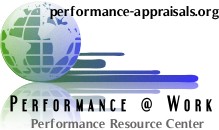Performance Management Only Works When It Links Up With What Happens Each And Every Day At Work (Linking To Strategic Objectives)
One of the problems with today's performance management techniques is that they are often used in isolation from what happens every day in the workplace. As is the case with strategic planning, the process fails, when it isn't integrated into the fabric of work, every day.
Now that you have a sense of how the performance review works as part of the performance anagement system, let’s look at how the performance management system fits in with other things that go on in your organization. We certainly don’t want performance reviews to dangle, unconnected to the related steps of performance management, since they would lose their value. Similarly, the performance management system shouldn’t dangle either. By understanding how it connects to the other things the organization does, you can maximize the value of the entire process.
One thing you will notice about the rest of this chapter is that it doesn’t discuss the linkages between performance review and pay, promotion, reward, and punishment. There’s a reason for this. Performance reviews work best when they are not linked to rewards and punishment. I also recognize that it’s likely (and even sensible) that they are linked in your company. Not to worry. The use of performance management and performance reviews to make personnel and salary decisions will be discussed in detail later in the book.
Strategic Planning and Unit/Company Goals
Are you comfortable with the idea that an employee’s true value is related to how well he or she contributes to the goals of the work unit and the company? You should be.
Believe it or not, it’s not uncommon for employees to be low contributors because their jobs and responsibilities have not been carefully planned and “rationalized” in terms of the work unit’s goals. Theoretically, everything an employee does should result in a contribution.
The link between the unit/company goals and performance management is important. In a well-functioning company, here’s how it works.
The company has goals, targets, and so on for the upcoming year and for several years beyond that. Your work unit’s goals should map out what and how the unit is to contribute toward achieving the company goals. Then it cascades down. Each employee’s performance goals and responsibilities are derived from those of the work unit.
The linkage is forged during the performance-planning phase of performance management. That’s why it’s so important to put the employee’s work in the context of the work and goals of the work unit. Do that and you start to maximize individual contributions.
